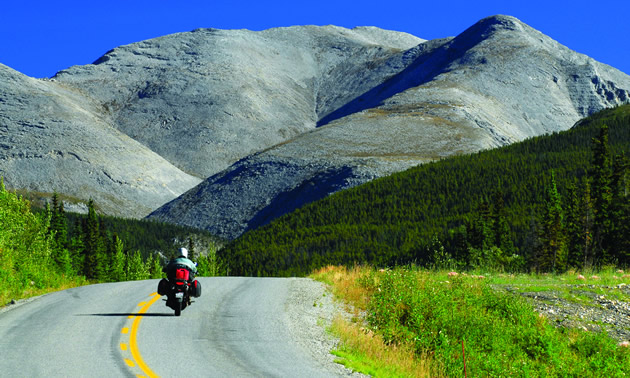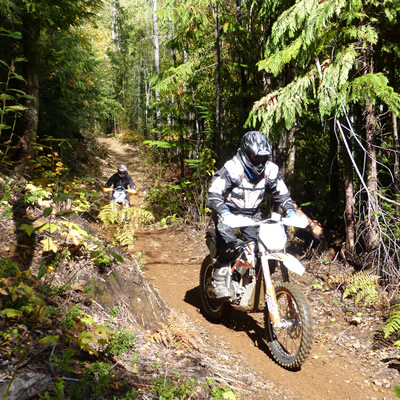For those seeking out adventure, natural history and wildlife, among other attractions, the Deh Cho Route through the Northwest Territories, British Columbia and Alberta provides numerous opportunities. The Deh Cho route links all three locations and can take you and your motorcycle to far-reaching destinations throughout a variety of terrain and scenery. Throughout the Alberta side of the route are numerous waterfalls, museums, golf courses, and many camping, fishing and hunting opportunities.
As one recent traveller of the Alberta portion of the Deh Cho Route explained, "I was really impressed with this portion of the highway." She and her family explored the Deh Cho route over the course of two weeks in 2010.
"It was country I had never seen before," she said. "I've lived in Fort Nelson for about 26 years now and had never been to the Northwest Territories or anywhere really north of Grande Prairie. I was really impressed with the condition of the highway—it meanders along, which adds a lot of interest. There's wildlife everywhere and the birds were quite prominent in Alberta."
Grande Prairie
Grande Prairie is one of the largest cities on the Deh Cho Route. It is home to some great golf courses and has a wonderful tourist organization and visitor centre. The Grande Prairie Museum & Heritage Village is set in the Muskoseepi Park in Grande Prairie, and showcases the history of the region. The museum is open year-round. Its main focus is the early pioneers, dating back to the early 1900s, who homesteaded Grande Prairie and contributed to the early development of business in the Peace Region.
High Level
High Level is home to many outdoor activities like hunting, camping, fishing, golfing, hiking, bird watching and motocross. The Mackenzie region also has numerous kinds of wildlife including bison, bear, deer, wolves, wolverines, coyotes, fox and many different species of birds.
Visiting the Mackenzie Crossroads Museum is also a must-do. The primary exhibit in the museum, the Northern Trading Post, features an outstanding collection of over 1,600 food and medicine containers, donated by local residents. These, plus other artifacts in use during the late 1800s and early 1900s, are showcased in a typical trading post/general store setting with living quarters attached. Supplementary displays feature farming and trapping, as well as a look at the native peoples of the region.
Falher and Manning
Here you can take a side trip to the community of Falher to see the world's largest bee in the Honey Capital of Canada. You can also visit the Battle River Pioneer Museum (one kilometre east of Manning on Highway 691), which has a number of buildings as well as artifacts including an albino moose, the famous Windigo moose horns, a two-headed calf and a large display of farm machinery.

Map of the Deh Cho Route. — Deh Cho Travel Connection.







Comments